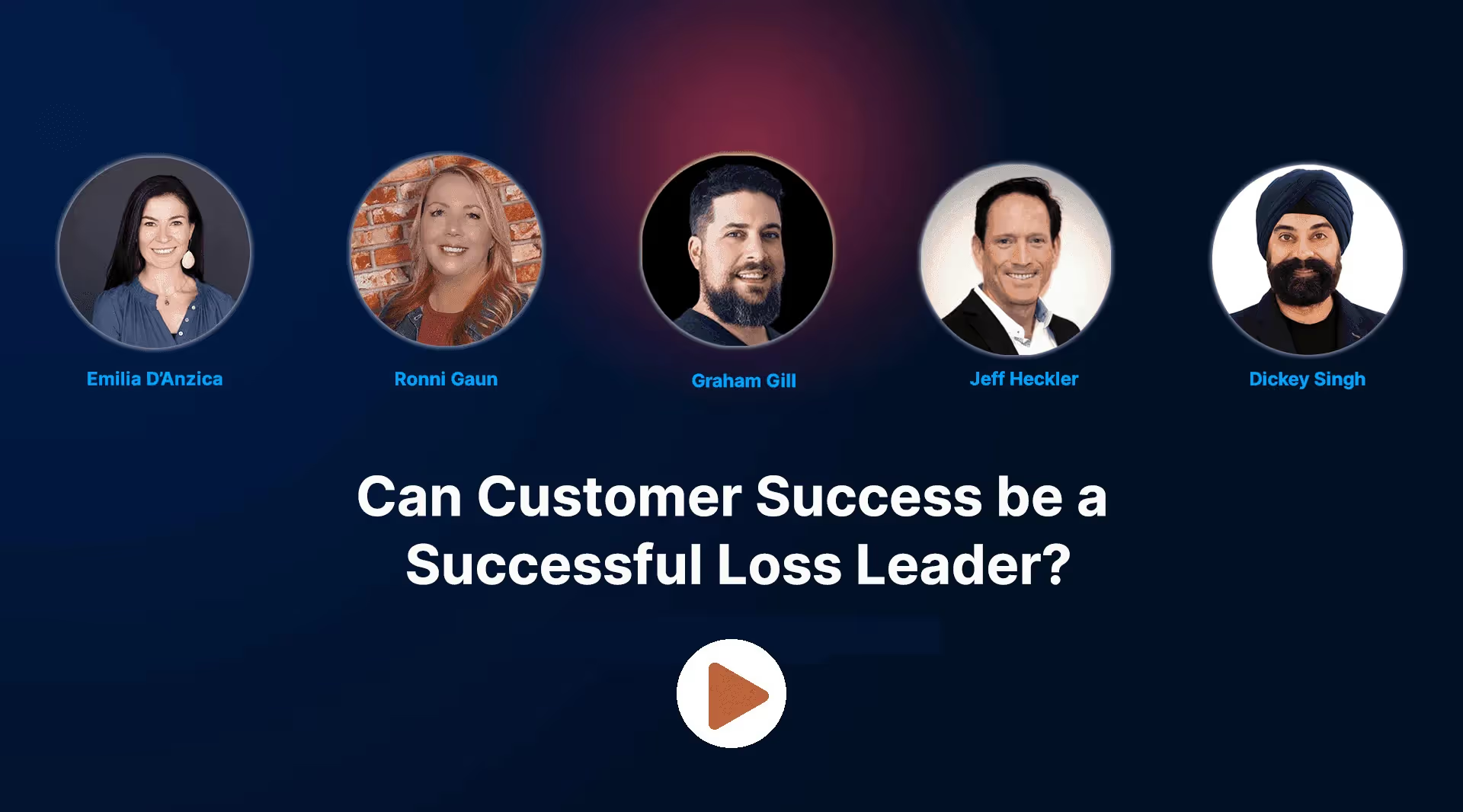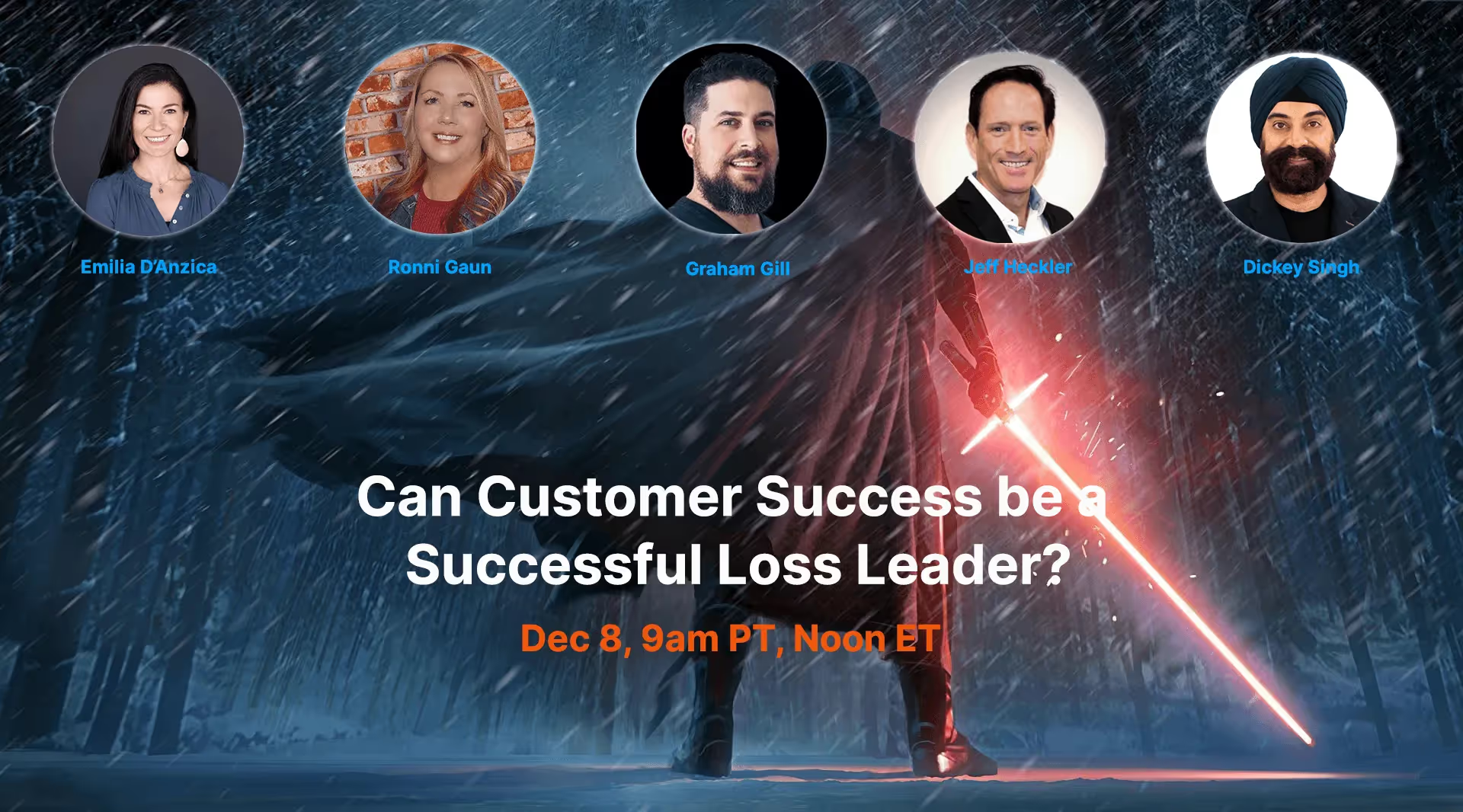Can Customer Success be a Successful Loss Leader?
Have you ever walked out of Costco with just milk and eggs? And why are they located in the farthest section of the warehouse? Why is Costco giving away a whole 16-inch pizza for just $9.95? Milk, eggs, and Pizza are loss leaders for Costco. They bring in people like us into the store.
A loss-leader strategy involves selling a specific product or service at a loss or zero-profit and expecting customers to purchase other items at a higher price.
Are there any parallels in Customer Success? There are pros and cons of applying Loss Leader Strategy to CS and not everyone agrees.
Listen to the webinar recording with panelists
Emilia D'Anzica of Growth Molecules,
Graham Gill of Maestro,
Ronni Gaun of Zoom,
Jeff Heckler of MarketSource, and
Dickey Singh, of cast.app.
3 distinct arguments for the age old question:
Should you charge for CS?
Blend CS in MRR - Why charge for adoption, retention, growth, and the ability to upsell and cross sell?
Charge for CS - Charge for CS because people value services they pay for.
Apply Loss Leader Strategy - Use free CS to acquire and retain customers, and compete effectively.
Drilldown on the arguments
Blend CS in MRR — You are already charging for CS to sustain as a business
If CS is a cost center — i.e., it costs the organization money to operate — you are offsetting the cost of CS by charging more for products and services to customer segments that rely on CSMs.
If you follow traditional segmentation, the top tier is bearing the cost of your CS department even if they do not need a lot of help.
“Your large accounts don't necessarily need a lot of help” — Wayne McCulloch.
Why should they pay for everyone’s use of CS?
Charge for CS, explicitly
Could CS be a profit center? Yes. Customer Success is influential and directly or indirectly involved in renewals, upsells, and cross-sells. Commissions for upsell / cross-sell recommendations are common and have more value when presented in context.
When you charge explicitly and selectively Customer Success, you are charging customers who need the help and offering competitive pricing to smaller customers (i.e. <50K ARR)
Use free CS to compete
Can you apply Loss-Leader Strategy to CS?
A loss-leader strategy involves selling a specific product or service at a loss or zero-profit and expecting customers to purchase other items at a higher price.
Considerations
Small new customers may need more help, temporarily. Consider offering premium CS for onboarding and risk mitigation.
Instead of charging for implementation and onboarding, consider spreading CS over 12 months if you prefer MRR revenue over professional services revenue.
Large and strategic customers my need continuous help. Sell them premium CS.
Large and strategic customers with low risk or need may not need premium CS at all.
Do you have free accounts? Consider offering CS for free to convert them into paid customers.
Do your customers value free?
How many times do customers attend a QBR, considering the number of products in an enterprise CS tech stack?
C-level and VP-level execs do not after first QBR.
Champions don’t after first renewal.
Should SaaS companies charge for CS?
People who pay for CS value it a lot more.
Your large accounts don't necessarily need a lot of help.
Excerpt from
Seven Pillars of CS by Wayne McCulloch, CCO WalkMe (previously EVP Google & Salesforce)
Let’s imagine that you currently have a fantastic customer who pays you millions of dollars each year. They're terrific advocates, they have an incredible center of excellence, and they do their own enablement training. They push you on features and capabilities all the time, so do you need your best CSM on that account all day, every day? Based on the [traditional segmentation] triangle, yes. They're a top customer. They're high touch. They need someone who is there all day, every day.
But the answer is, “Not so fast."
If you have a customer who is low value and low in risk, you need to focus your effort on retaining that account in an automated way. If you have an account that is extremely high value but low risk, you should put your effort into expanding that account.
Your large accounts don't necessarily need a lot of help.
I'm not saying we ignore them or don't spend time with them; I'm just saying their size doesn't automatically guarantee the use of your best resources.
It doesn't mean you need to give them 100% of a CSM's time in order to be successful. If we segment the way sales or marketing segments, we could miss these nuances. Initially, sales and marketing are looking for an immediate transaction that begins the relationship. Success needs its own segmentation best practices because they continually manage the current customer environment so they know how to dictate the appropriate investment in resources at any given time.
You need to look at the maturity of the customer-where are they in their life cycle or customer journey and their industry. There are a hundred different inputs you need to consider when you segment.
Webinar Recording

And did you see the webinar promo video?


